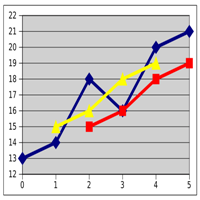New moving average voidage replacement strategy
 Faced with the inability to meet voidage replacement targets, this company received approval from the regulator to use a new voidage replacement strategy -- moving average VRR.
Faced with the inability to meet voidage replacement targets, this company received approval from the regulator to use a new voidage replacement strategy -- moving average VRR.
Rather than monitoring cumulative voidage replacement, this company is now required to watch the twelve month moving average. We found this information using AppIntel.
You can get this application immediately through our self-serve application portal.
Buy these submission docs now Subscribers get them for freeRegulation changes very frequently. Even when the written regulations don't change, the way the AER often changes their operating policy. Such is the case in this approval.
The only way to stay on top of regulatory changes is to read recent applications. Pay careful attention to the supplemental information requests (SIR).
?subject=Help me get up to speed on VRR trends&body=Help me get up to speed on VRR trends %0D%0A%0D%0AMy Name:__________ %0D%0AMy Phone Number:__________ %0D%0A%0D%0A(Or call Proven Sales at 403-803-2500.)">Contact Proven for support. We stay on top of flood strategies.
Don't use it for mature floods
This strategy allows the regulator much more leverage in very mature floods. Cumulative VRR doesn't change much if you have 40 years of injection history. So if the regulator can convince you to use rolling average VRR, they can enforce your VRR much more carefully.
Therefore we don't recommend this strategy for mature floods. But it's likely a fine strategy for new floods if just a little tougher to calculate.
Would you like to see what other operators in your areas are thinking about seismic, multifractured wells, polymer schemes and recovery? AppIntel can help.
Tags: Flood, Compliance
8 Jun 2016

Astrobleme impacts deep well disposal scheme
Learn from the experience of other operators

Non-meridian thermal wells
Still drilling horizontal wells N‑S? Why?

Steam surfactant co-injection
Want to win? What is your competitive advantage?

Surprise! Sour gas production from a sweet thermal scheme
Dealing with surprises in the oil and gas industry. What to do next.




 Calgary, Alberta, Canada
Calgary, Alberta, Canada
 Share
Share